Calibrate the temperature sensor on a Field Gauge
Do-it-yourself instructions for calibrating a Field Gauge with free FieldLab Desktop software. At the end of this process, FieldLab Desktop will compare the readings from your Reference device and Field Gauge (Zero, Mid Point, and Full Span), and if it is out of spec; automatically make any necessary adjustments to bring your Field Gauge to acceptable tolerances.
This article applies to the following devices:
- Field Gauge LC10 with temp sensor.
- Field Gauge LC20 with temp sensor.
- Process Meter LC30 with temp sensor.
Things you will need:
- A PC running Windows.
- FieldLab Desktop software version 1.28 or later installed on your PC. Download the latest version for free.
- A Ralston Instruments Field Gauge or Process Meter equipped with temperature sensor.
- USB Cord, provided with your purchase.
- A reference device with a temperature probe that is (recommended) at least 4 times more accurate than the Ralston Gauge.
- A temperature source that can be adjusted from -22°F to 302°F (-30°C to 150°C), and allows the temperature probes of both the Ralston Gauge and the reference device to be connected to; or immersed within.
Connect the Ralston Gauge temp probe and reference temp probe to the same temperature source.
Connect Ralston Gauge to a PC running FieldLab Desktop with the provided USB cord.
Power on the Ralston Gauge if you have not done so already.
Select the Ralston Gauge you want to calibrate from the Devices screen in FieldLab Desktop

In the Sensors Tab for the Ralston Gauge, select Recalibrate this Field Gauge.
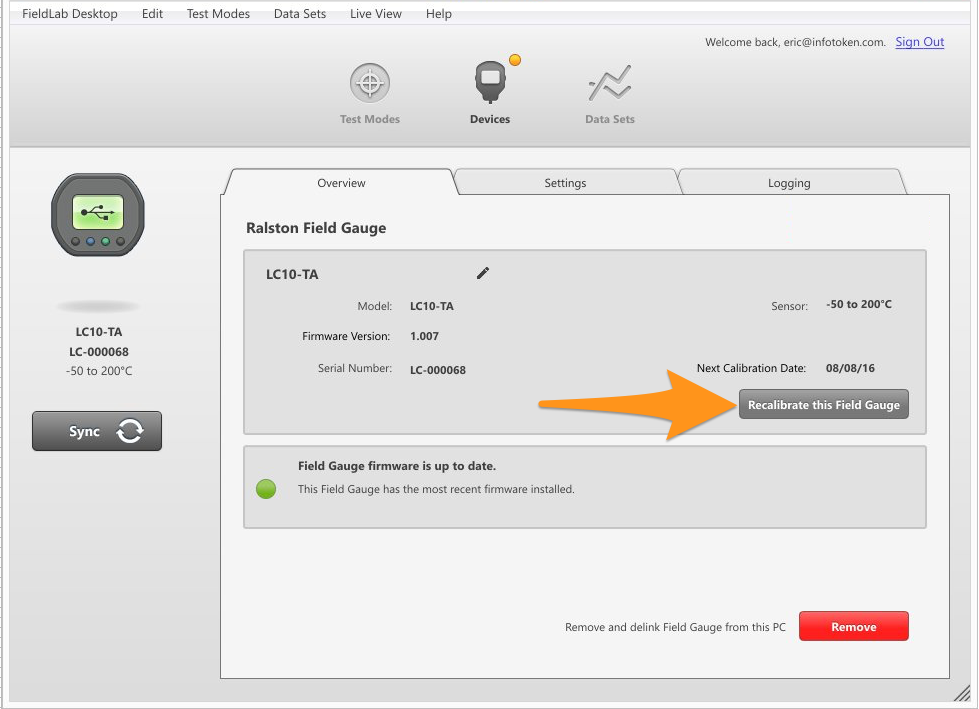
Select Recalibrate this Field Gauge
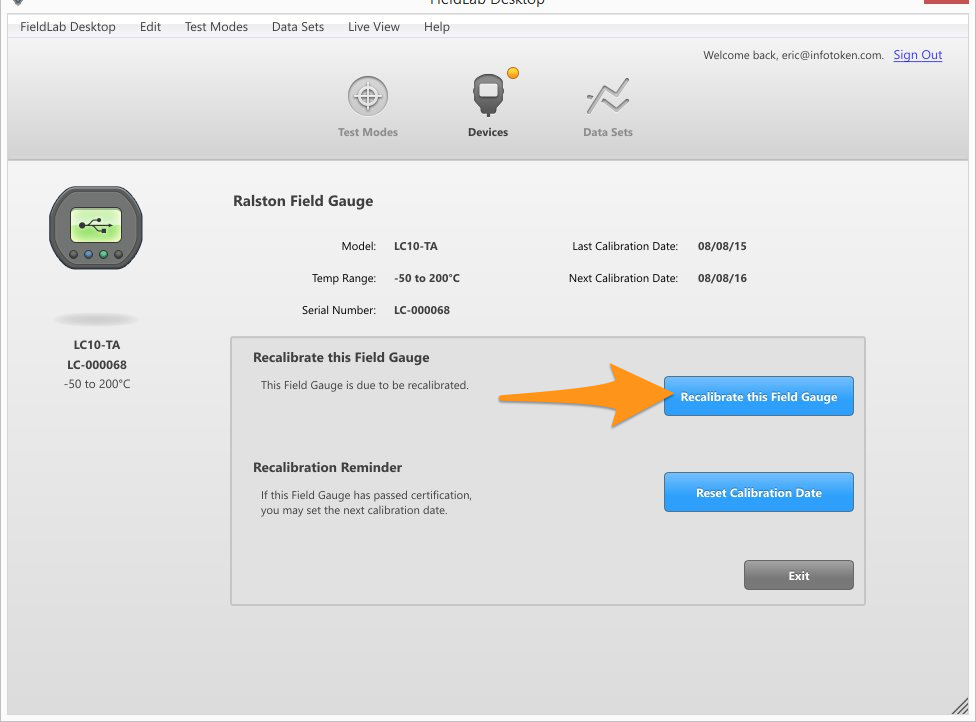
Select the temperature units you want to use for the calibration process
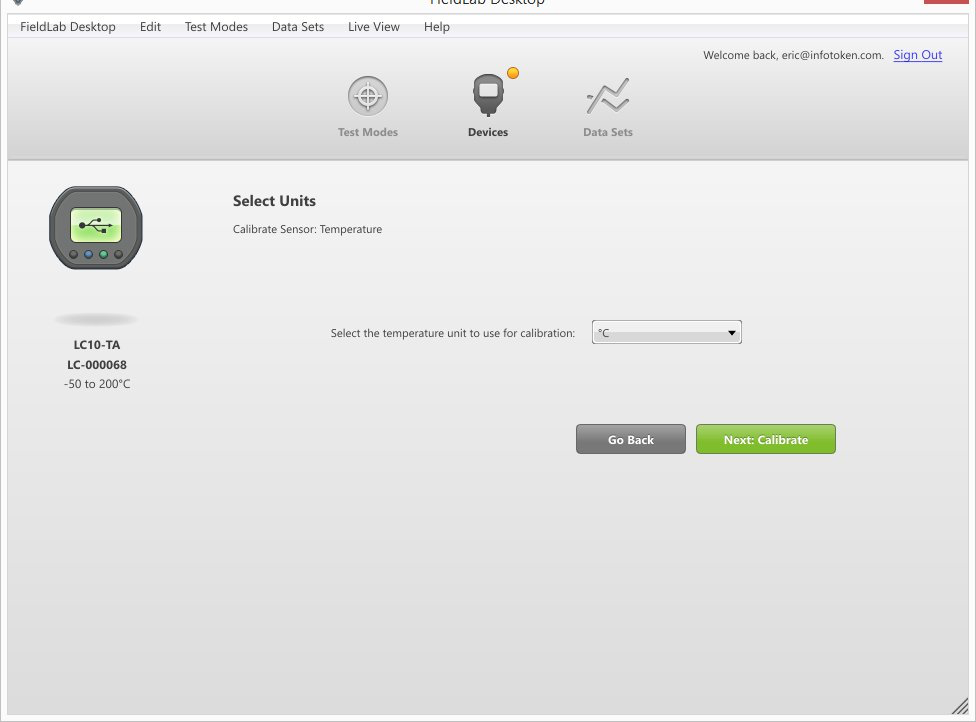
Adjust the temperature source to the indicated Min Point. -22.00 °F (-30.00 °C).
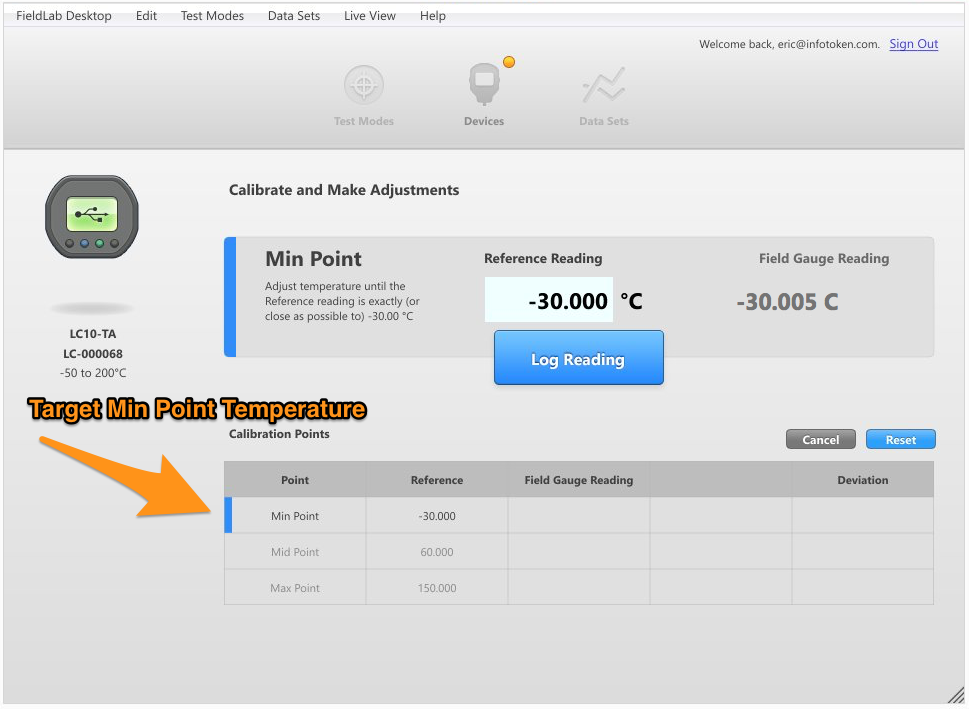
When the live reading on the reference device indicated you have reached the target Min Point temperature, select the "Log Reading" button.
If you cannot get the reference device to the exact Min Point temperature, that's ok. Simply adjust the temperature source to get the reference device to read as close as possible to the reference point, and then manually enter what the reference device reading is in the Reference Reading field.
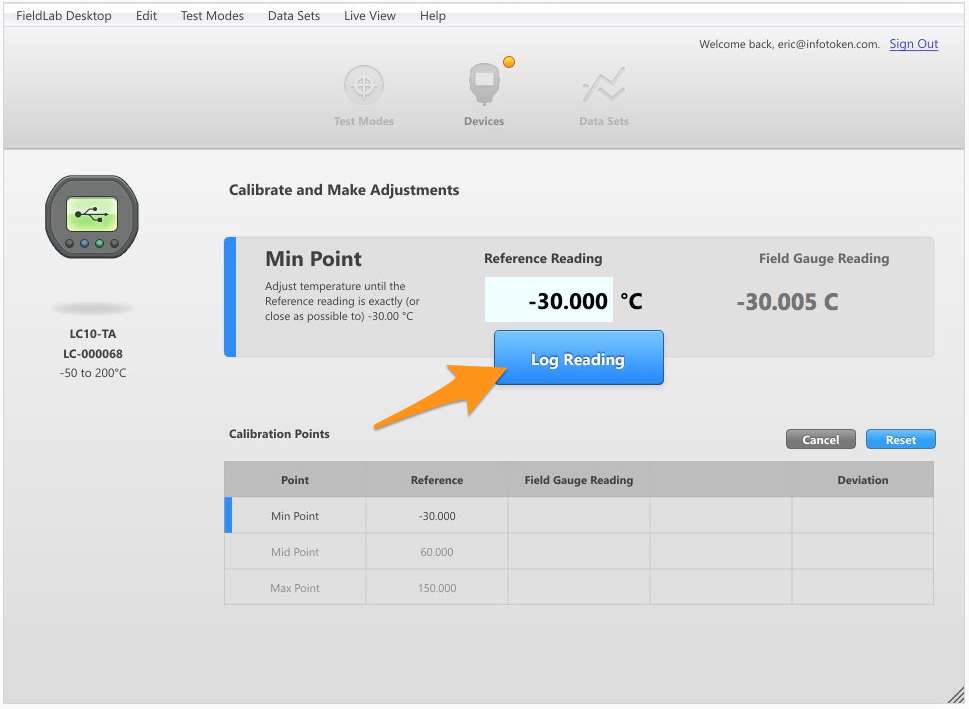
Review the reference and Ralston Gauge readings. If you are satisfied with the logged readings for the Min Point, select the button titled "Up Next, Mid Point".
Repeat steps 8, 9, and 10 each of the remaining reference points.
Once you have logged the Min, Mid, and Max Points, select the Make Adjustments button.
When you click the Make Adjustments button, FieldLab Desktop will use the information provided to recalibrate the Ralston Gauge.
Set the Next Calibration Date
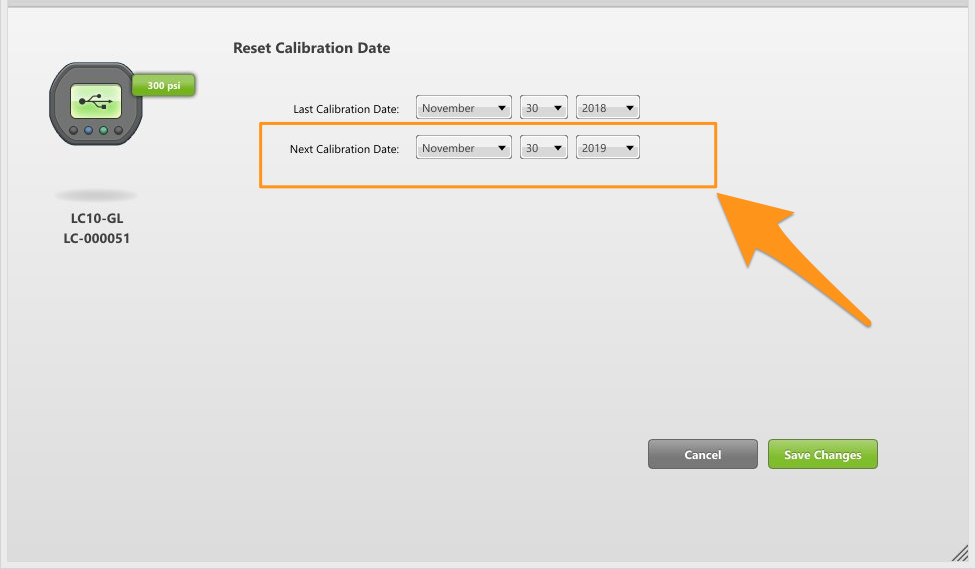
Save Changes so that the next calibration date will be recorded on your Ralston Gauge and in FieldLab Desktop.
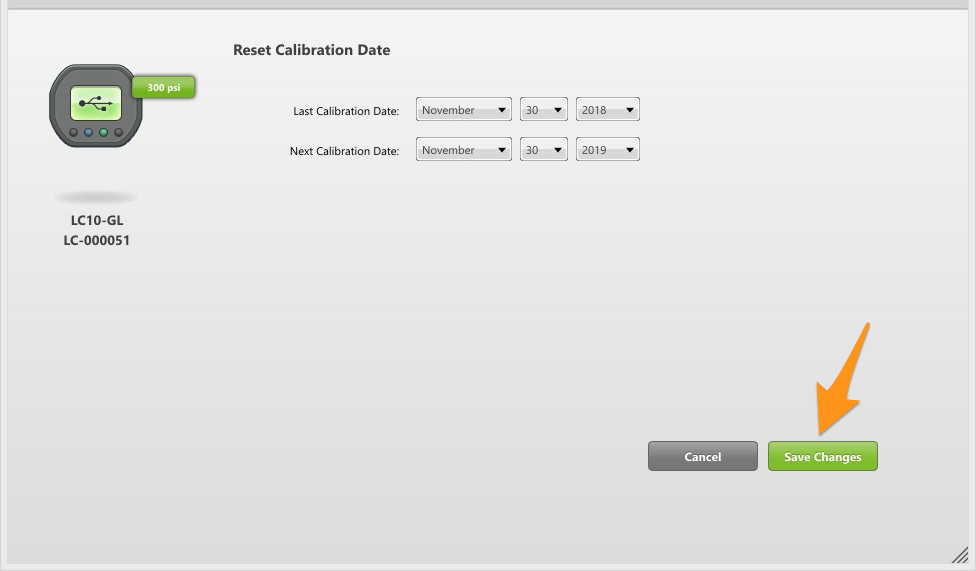
Select Exit to return to the Overview screen for your Ralston Gauge.
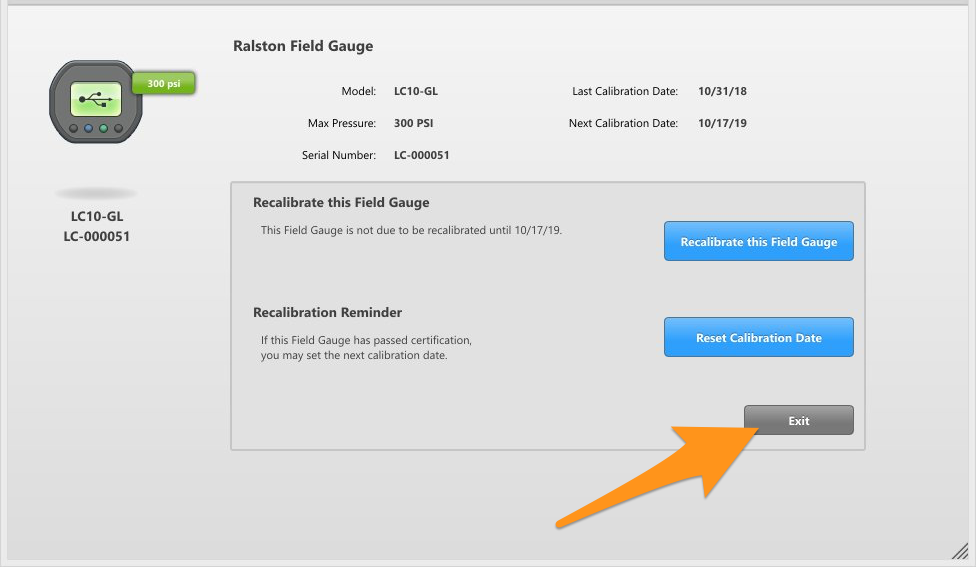
Done!
Your Ralston Gauge is now calibrated until the next scheduled recalibration date.
Related Articles
Log pressure and/or temperature data to your computer with FieldLab Desktop
This article applies to the following products: Field Gauge LC10, all models Field Gauge LC20, all models Process Meter LC30, all models FieldLab Digital Pressure Calibrator, all models. Things you will need: A PC running Windows. FieldLab Desktop ...Add or Remove pressure engineering units on a Field Gauge
Update or download & install the latest version of the FieldLab Desktop app on your Windows computer to Version 1.40.4 or later. Update FieldLab Desktop to the Latest Version. 1. Connect & Power On Open the FieldLab Desktop Software Connect the Field ...Log pressure and temperature on your computer with one or more Ralston gauges
Log pressure, temperature, and view live graphing from multiple Ralston Gauges on your computer using the FieldLab Desktop software app. Save all readings to one data set. This article applies to the following devices: Field Gauge LC10, all models ...Create Custom Pressure Units for a Ralston Gauge
This article applies to: Field Gauge. All models equipped with a pressure sensor. FieldLab. All models. What you will need: A PC running Windows. FieldLab Desktop software version 1.24 or later installed on your PC. Download the latest version for ...Change Last Calibration and Next Calibration Dates on a Field Gauge
All Ralston Gauge models display a helpful reminder for the next date the device is due for calibration, as well as the last time it was calibrated. You can change the date based on your device calibration schedule with FieldLab Desktop. This ...
Recent Articles
Troubleshoot USB Power Noise Causing Pressure Reading Drift on a Ralston Gauge
Problem Unexpected pressure reading changes on an Ralston LC gauge when connected via USB. Root Cause Electrical noise is introduced through a low-quality USB hub and power supply interference. Noise from switch-mode power supplies (SMPS) can travel ...Adjust Damping on your Ralston Gauge
Damping slows the visual updates of a pressure gauge’s reading. The goal is to minimize minor fluctuations of the pressure reading on the screen caused by subtle variations in pressure that may create unwanted visual noise. Ralston gauges are set to ...Register your Ralston Gauge
Register your Ralston gauge to access calibration certificates and install firmware updates. This article applies to: FieldLab, Field Gauge LC10, LC20, and Process Meter LC30, all models. Things you will need: A PC running Windows. FieldLab Desktop ...Look Up Lead Time and Pricing for a Ralston Product
Go to ralstoninst.com Sign in to your Ralston account Select "Look Up Pricing and Lead Time by Model Number" Enter the model number of the Ralston product View the search results For each model number in your search results, info will be provided ...Download Current Price List
Get current pricing for all Ralston products Price lists are available in PDF, XLS, and CSV formats. All file formats include the following fields: Product Family (e.g. "NPT Male Quick-test Adapters) Part Number (e.g. "QTHA-2MS1") Description MSRP ...